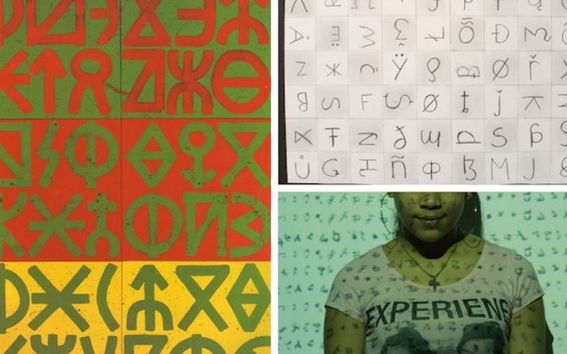Finnish network model for art education doctoral studies has international potential

In autumn of 2013, the research unit of Aalto University School of Arts, Design and Architecture (ARTS) asked professors to submit proposals for doctoral consortiums and networks to be funded by Aalto ARTS. Professor of International Art Education Kevin Tavin tried to find networks specifically focusing on art education - but there were none. It appeared that different configurations had occurred in the past, but there was no current active network in Aalto ARTS, or in other institutions in Finland.
Since changes in the funding system in 2012, universities in Finland have needed to allocate their own funding to continue the doctoral education collaboration between universities. Therefore, in the autumn of 2013, after some discussions and planning with colleagues within Aalto ARTS and other universities where art education is a field of study - the University of Lapland and the University of Jyväskylä - Tavin decided to co-develop a proposal for a new network, Finnish Art-Education Doctoral Studies (FADS) - and received funding. The pinnacle of the network “Experimenting FADS”, edited by Tavin and Mirja Hiltunen, was published in November 2017 by Aalto ARTS Books. The book is endorsed by leading international scholars in art education and will be used by professors around the globe.
“We were experimenting towards new ideas, communities, and entanglements, internationally. Our core question was: What would benefit the doctoral students in their dissertation work? The key was a sustainable network where students get a chance to share, discuss and get feedback, but also to learn and gain from interdisciplinary approaches. I think we have found a few means of working that could be beneficial in Finland, but certainly internationally. Art education on the doctoral level is quite unique in Finland and admired internationally” Tavin states.
Experimenting and going on the non-comfort zone
For the proposal in 2013, Tavin thought of his own background in the United States where, as a doctoral student, he had got a chance to share his dissertation work and gain feedback from faculty in a gathering of selected doctoral students, and to present his work at the National Art Education Association’s annual conference. He thought this kind of networks would be needed in Finland, as well.
“However, the networks in the US are merely one time show, nothing to rely on for any longer. Art education in the US is very centered and home-based. There is a lot of competition and rankings between universities, so the other universities are more of an ‘enemy’ sometimes than a companion. In Finland the whole field is smaller, yet people tend to work mostly alone here, too. This is what we want to change now”, explains Tavin.
He and the coordinators thought the FADS network should be of sustainable and dynamic nature, helping the students to gain from each other and the faculty. And, it was important to have an international aspect in order to bring a wider, global perspective in the research work - since art education is facing many challenges that are shared globally.
The team of twelve doctoral students, several coordinators from all three universities, and international guests from the US, Australia, Canada, and Germany participated in the network, and worked and bonded for all four years. All participants epitomised very different branches and approaches to art education; the only thing in common for all was pedagogy. In the beginning it appeared that students didn’t know each other or either other’s work - even though the field is rather small in Finland. The network’s way of working was experimental. There were symposiums, informal gatherings in form of hiking, saunas, and discussions live and on-line. In between the gatherings the students had different tasks, building upon the previous gathering. Informal ways of getting together and sharing their work and thoughts was new to the students at first, but shortly became very useful.
“The goal was not to get everyone graduated faster, but to bring different students, divergent voices, and various approaches together and see what happens. The students bonded well throughout the period of four years. Of course, there were certain moments of frustration for students, since it was quite a lot of work they had to do. But those moments were always pedagogical—always experimental, and somehow always entangled with their dissertation research”, Tavin sums up.
The consortium is thinking of developing a hybrid network from FADS, this time focusing especially on the art schooling with a teacher education orientation. “This area is where Aalto University students make a significant social impact, reaching tens of thousands of students across Finland every year. Of course, art education has been a part of Aalto and its predecessor for over one hundred years. Consider the hundreds of thousands—if not millions—of lives touched over that time”, Tavin explains.
For more information:
Professor of International Art Education Kevin Tavin, Aalto University School of Arts, Design and Architecture, tel. 358 50 434 2961, [email protected]
“Experimenting FADS”, edited by Kevin Tavin and Mirja Hiltunen, November 2017 by Aalto ARTS Books, shop.aalto.fi
Read more news

Get to know us: Associate Professor Maria Sammalkorpi
Sammalkorpi received her doctorate from Helsinki University of Technology 2004. After her defence, she has worked as a researcher at the Universities of Princeton, Yale and Aalto.
Aalto computer scientists in ICML 2024
Computer scientists in ICML 2024
Getting bacteria into line
Physicists use magnetic fields to manipulate bacterial behaviour